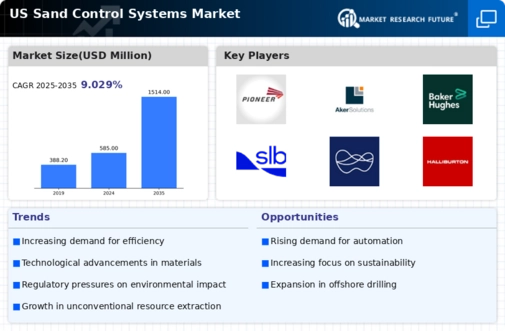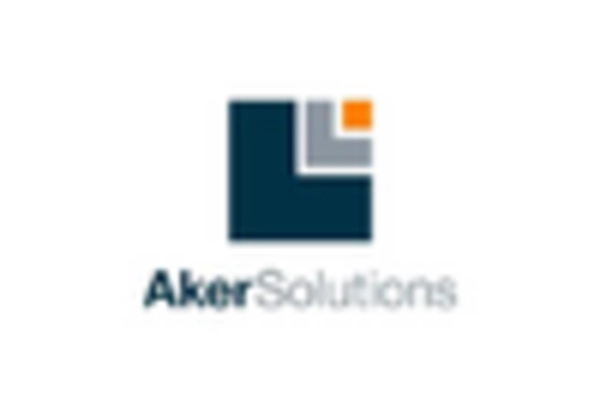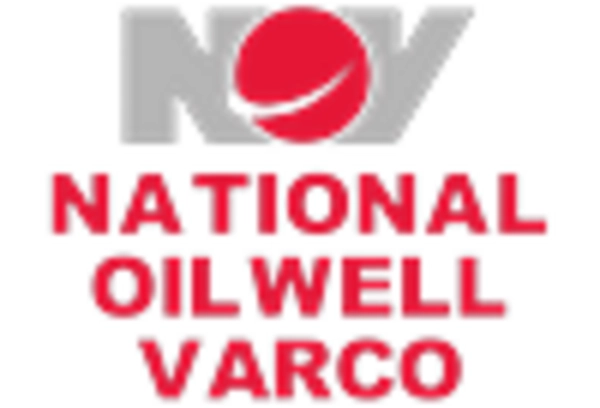Rising Demand for Oil and Gas
The sand control-systems market is experiencing a notable surge in demand driven by the increasing exploration and production activities in the oil and gas sector. As the US continues to rely heavily on fossil fuels, the need for efficient sand control solutions becomes paramount. In 2025, the US oil production is projected to reach approximately 12 million barrels per day, necessitating advanced sand control technologies to mitigate production challenges. This demand is further fueled by the growing number of unconventional oil and gas projects, which often face significant sand-related issues. Consequently, companies are investing in innovative sand control systems to enhance production efficiency and reduce operational costs, thereby propelling market growth.
Growing Focus on Operational Efficiency
The sand control-systems market is increasingly driven by a growing focus on operational efficiency among oil and gas operators. In a competitive landscape, companies are under pressure to optimize their production processes and reduce costs. Effective sand control systems play a crucial role in achieving these objectives by minimizing sand-related issues that can lead to costly downtime. As operators strive to enhance their overall efficiency, the demand for advanced sand control technologies is expected to rise. In 2025, it is anticipated that companies implementing these systems could see an improvement in production efficiency by up to 20%, further solidifying the importance of sand control solutions in the market.
Technological Innovations in Sand Control
The sand control-systems market is witnessing a wave of technological innovations that are reshaping the landscape of sand management in the oil and gas industry. Advancements in materials science and engineering are leading to the development of more effective sand control solutions, such as advanced gravel packing techniques and the use of smart materials. These innovations not only enhance the performance of sand control systems but also reduce costs associated with maintenance and downtime. In 2025, it is estimated that the adoption of these technologies could lead to a reduction in operational costs by up to 15%, making them increasingly attractive to operators in the competitive market.
Regulatory Compliance and Safety Standards
The sand control-systems market is significantly influenced by stringent regulatory compliance and safety standards imposed by government agencies. In the US, regulations surrounding environmental protection and worker safety are becoming increasingly rigorous. Companies operating in the oil and gas sector are compelled to adopt advanced sand control technologies to meet these regulations and ensure safe operations. For instance, the Environmental Protection Agency (EPA) has established guidelines that necessitate the implementation of effective sand control measures to minimize environmental impact. As a result, the demand for reliable sand control systems is expected to rise, as companies seek to comply with these regulations while maintaining operational efficiency.
Increased Investment in Oil and Gas Infrastructure
The sand control-systems market is benefiting from increased investment in oil and gas infrastructure across the US. As companies seek to expand their production capabilities, there is a growing need for robust sand control solutions to support new drilling projects. The US government has also been promoting infrastructure development, which is expected to lead to a rise in drilling activities. In 2025, investments in oil and gas infrastructure are projected to exceed $100 billion, creating a favorable environment for the sand control-systems market. This influx of capital is likely to drive demand for innovative sand control technologies that can effectively address the challenges posed by sand production.

















Leave a Comment